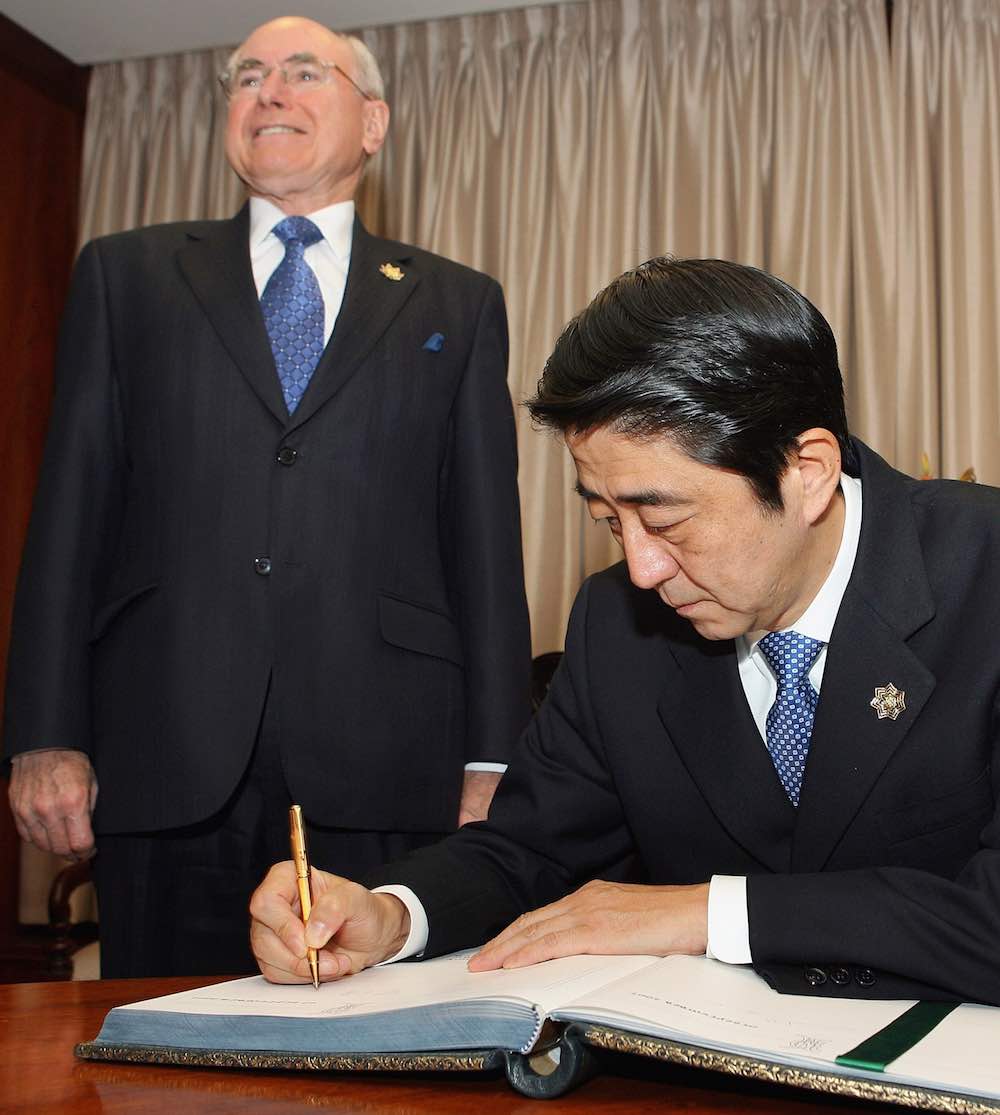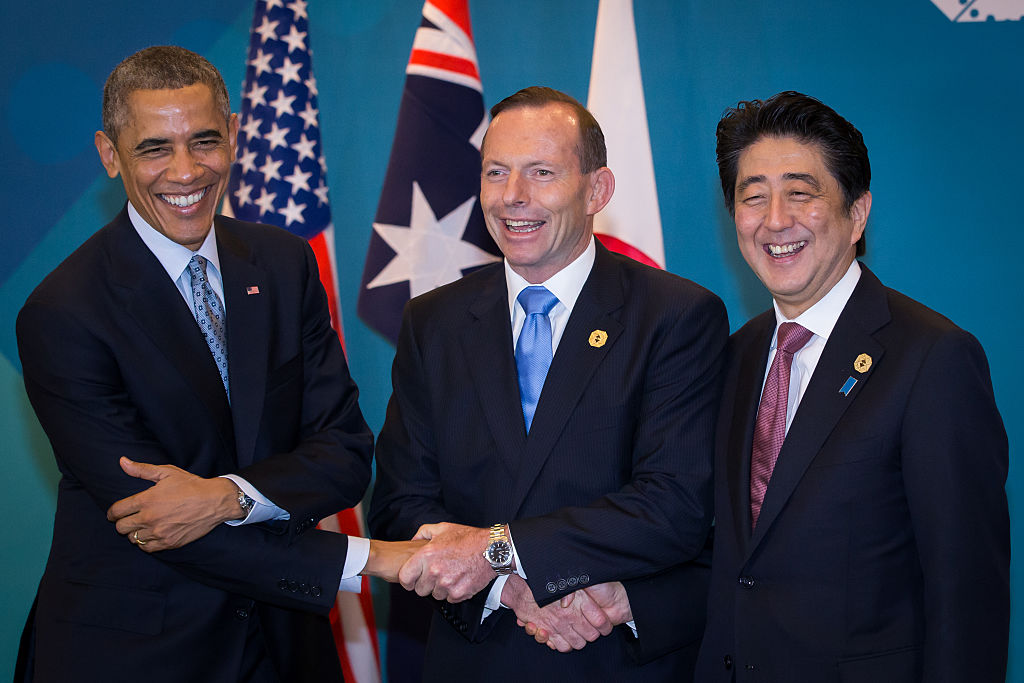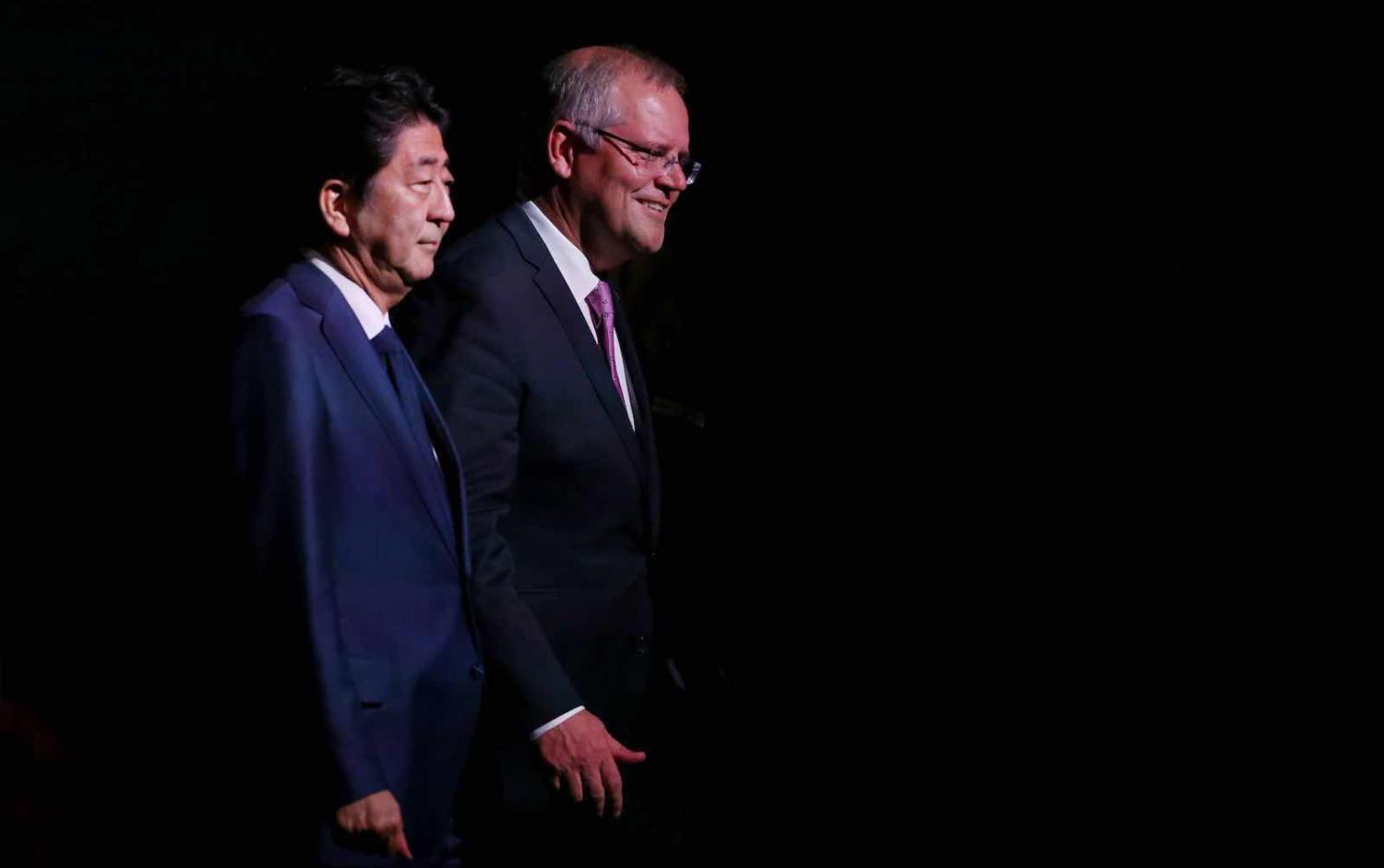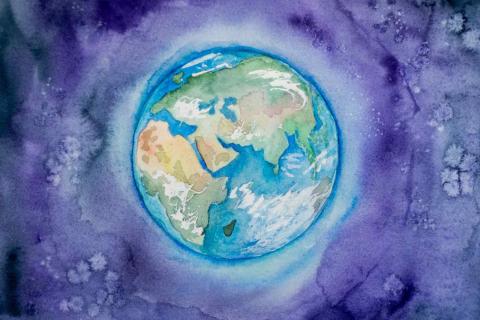Japanese Prime Minister Shinzo Abe’s resignation announcement on Friday caught almost everyone by surprise. Notably Scott Morrison tweeted that he would miss Abe as a friend and a “mentor” and that “his leadership, wisdom, generosity and vision have championed the cause of peace, freedom and prosperity in our region and the world more broadly”.
Morrison’s description of Abe as a senior statesman in the Asia Pacific and a mentor raises a number of intriguing questions.
To what extent was Abe instrumental in the upgrading of bilateral ties between the two countries since 2006? Given the revolving door of Prime Ministers in Australia since 2013, did Abe’s longevity have an influence on bilateral ties at the elite level? Was the Abe connection problematic as well as advantageous for Australian policy makers?
An examination of Abe’s policy goals demonstrates a commitment to realigning Japan’s foreign policy and, in particular, working more closely with a few select countries including Australia. Prior to becoming Prime Minister in 2006, for example, Abe published Towards a Beautiful Country (Utsukushii Kuni e), which advocated strengthening security cooperation with the United States, Australia and India. For Abe the explicit focus on Australia as a high priority country (the first Japanese Prime Minister to do so) had a personal connection. As Prime Minister, his revered paternal grandfather, Nobusuke Kishi signed off on the 1957 Agreement on Commerce that became the cornerstone for bilateral post-war reconciliation and the core foundation of the post-war Australia-Japan relationship.
Abe strongly desired to emulate his grandfather and signed off on the historic Joint Declaration on Security Cooperation (JDSC) with John Howard in March 2007. Abe also sought to strengthen the bilateral strategic partnership by the creation of the controversial Peace and Security Legislation enacted in 2015 with a view to enabling Japan to exercise the partial right of collective self-defence. Notably, the legislation allows Japanese Self-Defence Forces (SDF) to defend Australia in the event of a survival threatening situation.
On the economic front Abe and Howard began negotiations for the free trade agreement (FTA) or the economic partnership agreement (EPA) in December 2006. After Abe returned to power in December 2012, he pursued the FTA goal with Australia with renewed vigour and signed off on the FTA/EPA with Tony Abbott in September 2014. The JDSC and subsequent security upgrades and the FTA/EPA were the missing pieces in bilateral ties and have led to even stronger connections between already well-established commercial interest groups and powerful alignment between security communities in Tokyo and Canberra.

Clearly then, the bilateral relationship has been largely trouble-free and one of the easiest for Australia to manage. The most problematic areas for Australia were Abe’s desire to amend Article Nine of the Japanese Constitution, quadrilateral talks including India, whaling and the submarine saga. Of these issues, the issue over Article Nine is the most complex.
Successive Australian Prime Ministers since Bob Hawke have supported Japan’s incremental enhancement of SDF and greater military role within the United States security framework. There is less support, however, for an amendment of Article Nine due to its potential to provoke hostile responses by China and South Korea, and resurrect residual war-related antagonism in the Asia Pacific more generally.
The decision by the Turnbull government in 2016 to select a French company to produce Australia’s next generation of submarines over Japan’s tender highlighted the limitations of networks and friendships.
As Australian and Japanese security communities have become closer in recent years however, concerns about Article Nine have diminished. Abe’s minimal approach to any possible amendment has also reduced concerns in the region.
Whaling has been the perennial thorn in relations and has been a source of occasional irritation from time to time but has been largely managed. Quadrilateral (or “Quad”) talks involving India, which were viewed as a strategic alignment to block the rise of China, presented a problem for the Rudd government engaging with China and supporting China’s rise within the existing framework. Quad talks subsequently folded but have been revived and resumed in July 2019, suggesting closer alignment between the four countries during a period of more assertive Chinese regional diplomacy. Labor in opposition has also supported Quad talks.

The decision by the Turnbull government in 2016 to select a French company to produce Australia’s next generation of submarines over Japan’s tender highlighted the limitations of networks and friendships. Japanese negotiators were genuinely surprised at the Australian decision. It was assumed that it was a “done deal” based on the close friendship between Abe and Tony Abbott. The leadership change (Abbott to Turnbull) and strict adherence to a tender process that did not favour Japanese interests came as a rude shock to Japanese supporters of Australia and became a source of tension for the following 12 months.
Overall however, the bilateral relationship has been relatively smooth and Abe expertly developed his political and personal relationships with his Australian counterparts from Howard to Morrison. His personal friendships with consecutive Australian leaders in themselves are his legacy as Japan’s longest-serving Prime Minister who proactively pursued a “special strategic partnership” with Australia in the age of the Indo-Pacific.

